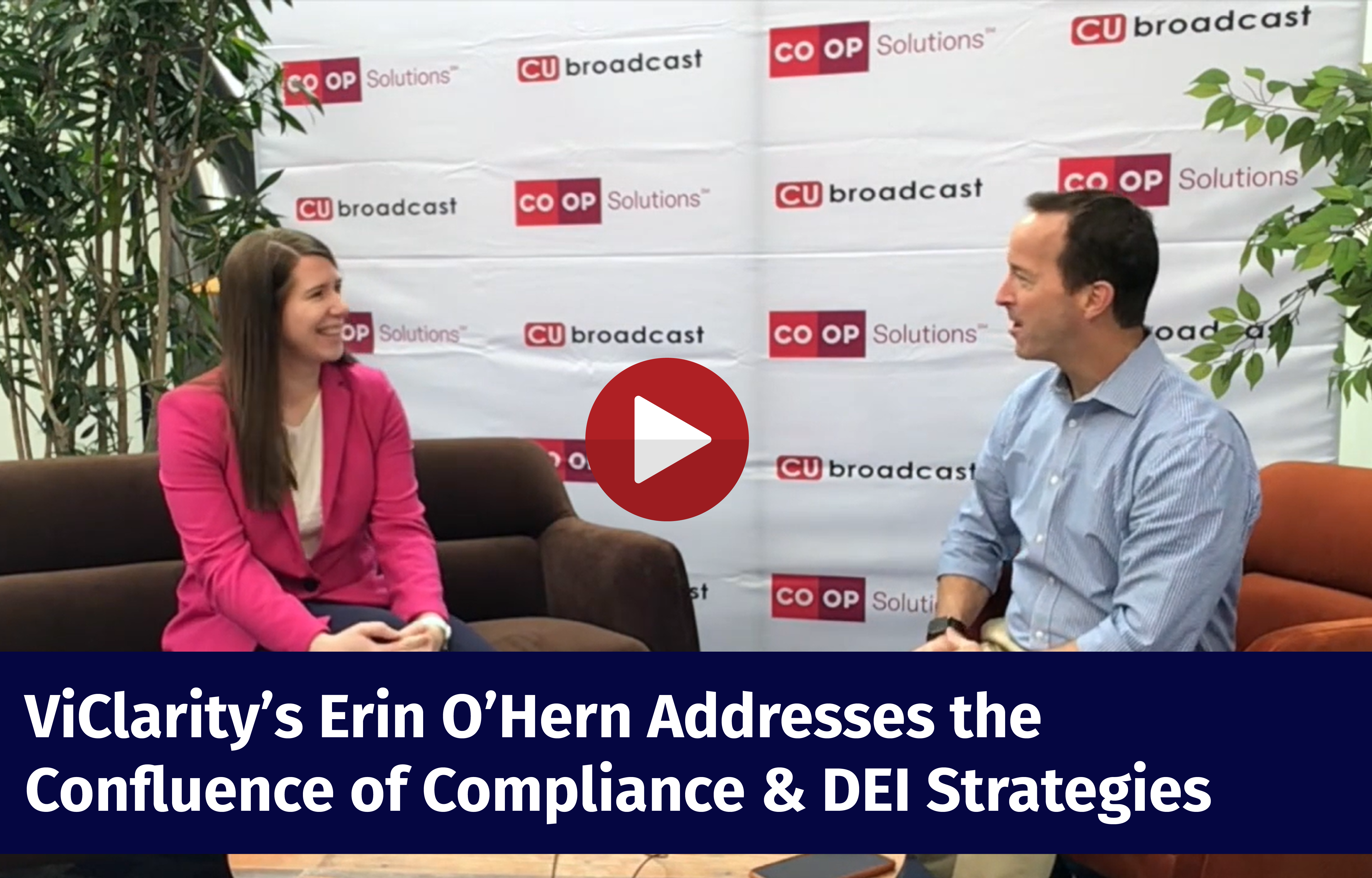
3 Risks of Neglecting Diversity, Equity and Inclusion
April 7, 2023
By Erin O'Hern, Vice President of Strategic Initiatives
If I had a dollar for every time the word “risk” arises during DEI discussions, I’d be a wealthy individual.
In this context, risk typically is offered up as a reason not to pursue a new program, product or initiative that challenges “the way we’ve always done things.” But for DEI to advance in any sort of meaningful way, breaking the status quo is exactly what credit union people must do.
In fact, failing to achieve DEI progress is, in and of itself, a sizable liability for any credit union. While a range of exposures comes to mind, three risks in particular stand out as especially acute given today’s growing understanding of the impact diversity, equity and inclusion can have on a business.
Risk No. 1: Falling Short of Regulator Expectations
For the past several years, regulators have expressed their intention to focus on the elimination of bias and discrimination in financial access. A recent example of this is the NCUA’s inclusion of loan pricing and real estate appraisal discrimination in its list of 2023 supervisory priorities.
NCUA Chairman Harper notes, “credit unions must be ‘all-in’ on diversity, equity and inclusion, and the commitment to these principals should be reflected in the results of credit union lending and performance.”
Regulator energy for their own internal cultures, as well as the financial inclusion efforts of those they examine, should rocket DEI to the top of every credit union’s strategic objectives. Working together, regulatory compliance and DEI officers can take financial inclusion from ambition to reality, systematically identifying and controlling for any risks related to expanded access to its products and services.
Risk No. 2: Failing to Thrive in a Competitive Landscape
Serving the unbanked and underbanked has become a go-to strategy for big tech competitors. Unfortunately, these organizations do not always have the best interests of consumers in mind. Payday loans, remittance services and buy-now-pay-later schemes targeting marginalized consumers are money makers for challengers who also are steadily chipping away at credit union market penetration.
Credit unions can level the playing field, but they must offer in-demand services that preserve the dignity of those attempting to participate in the mainstream banking system. For example, account opening procedures should provide the option to use an ITIN rather than a social security number, or the residential address of a next of kin for someone without a home address. With alternative fields, online banking experiences become more accessible to newly immigrated individuals or people experiencing homelessness, for instance.
Making changes like these requires executives and boards to avoid “group think.” When a set of homogeneous decision makers holds the reigns to everything from marketing and product development to strategic planning and operational innovation, it is the membership that ultimately suffers from the credit union’s failure to remain relevant.
Being intentional about hiring, promoting and empowering staff who look like the members you want to serve is essential to transforming for modern members. So, too, is encouraging compliance teams to look at the regulations through a DEI lens and review recommendations from staff who share a lived experience with underserved segments.
This can be a challenge given the average compliance pro’s natural state, which understandably is one of caution. But executives and boards have massive influence here. By creating a culture of compliance that supports incorporating the risks of not acting and stretching to find compliant solutions to tricky problems, leaders give compliance officers the runway they need to hasten meaningful (and compliant) change.
Risk No. 3: Not Attracting High-Performing Staff
In addition to focusing on financial inclusion, regulators have also turned attention to leadership continuity within the nation’s credit unions. In this year’s letter of supervisory priorities, the NCUA cited a lack of succession planning as a reason for consolidation, a significant risk facing the industry today.
Several trends – from the aging out of tenured credit union leaders to the Great Resignation of all generations – are creating open positions within cooperatives all over the country. What better time to enrich the movement with new perspectives, varying viewpoints and unique backgrounds? Especially now when more workplace contributions can be made remotely, removing one of the most difficult challenges to attracting diverse candidates.
Providing a multicultural environment may attract higher-performing candidates. In fact, a diverse workforce is a priority for 67 percent of job seekers when deciding where to work. Can your credit union risk turning off six out of every 10 candidates?
Final Thoughts
Whenever I think about DEI and risk, I recall the FinCEN advisory from 2014 that insisted the culture of an organization is critical to its compliance. One of my favorite lines from that letter is this:
The commitment of an organization’s leaders should be visible within the organization, as such commitment influences the attitudes of others within the organization.
So much of DEI success comes down to attitude and intentional change. Top-down acknowledgement of the risks of failing at DEI can be that visible model that energizes an entire credit union. By developing DEI and compliance leadership simultaneously, credit unions will more easily clear any remaining hurdles that stand in the way of financial access for all.
Learn more about the important intersection of compliance and DEI strategies from Erin's video interview with Mike Lawson from CU Broadcast.

Originally published in CU Insight, March 30, 2023.
Back